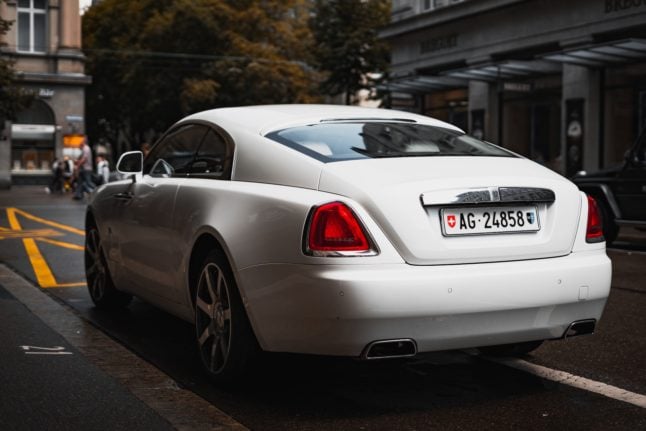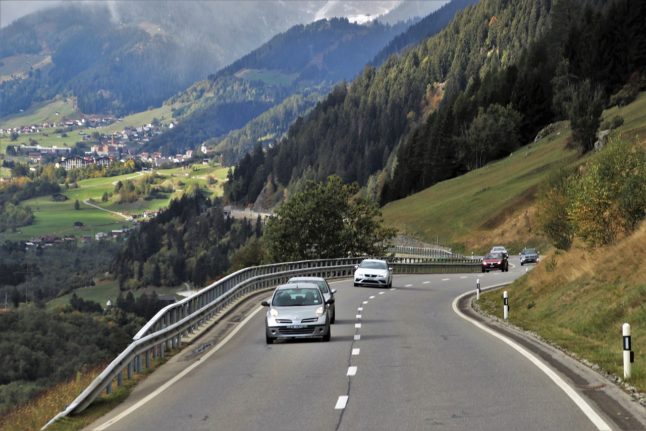In Switzerland, official parking spaces are all marked either blue, white or yellow, and in most cases chargeable. In fact, if you’re looking to find a free parking space – be it for an hour or two, you will likely find yourself out of luck. In Switzerland, parking machines will pop up even in the most unlikely of places.
So, whether you’re living in or simply visiting a Swiss city, it is important to get familiar with the country’s different parking zones and rules as breaking them can – and if caught, will – result in a hefty fine.
Blue zone
The blue zone, which is uniform throughout Switzerland, operates from Monday to Saturday between 8am and 7pm. This means if you arrive between 8am and 6pm you can only park there for an hour, or up to a maximum of 89 minutes – and not a minute over.
Example: If you arrive at your parking slot for 8.01am, you can set the time on your parking disc to 08.30am and stay until 09.30am – nobody will bat an eyelash.
On Sundays as well as public bank holidays you can park in the blue zone free of charge all day long without a parking disc, provided there are no signs pointing to the contrary. Remember, when in doubt, always double-check.
An important but oftentimes unknown – even to the Swiss – exception is the so-called lunch break extension. If you park your car between 11.30am and 1.29pm, you can stay parked until 2.30pm, giving you ample time to enjoy a lovely meal or run some lunchtime errands.
Moreover, residents of a blue zone area can obtain a parking card granting them permission to park their car in a blue zone indefinitely – so long as their vehicle is properly registered and has a valid number plate.
Parking disc rules
The parking disc must be set to the arrival time and placed behind the windscreen. However, since the disc can be only set for every half hour, it’s impossible to set your exact arrival time. In any case, the arrow must be set to the trailing dash of the actual arrival time. A setting between two dashes is not permitted.
Example: If a vehicle is parked at 1.20pm, the parking disc must be set to 1.30pm. If the arrival time is 1.35pm, the parking disc must be set to 2pm.
On 1 January 2003, Switzerland introduced its latest parking disc, which is 11 centimetres wide and 15 centimetres high, and blue and white in colour. Every other variation is no longer permitted.
Blue zone fines
In the case that you break a rule or two when it comes to parking in a blue zone, ignorance will prove neither bliss nor excuse. You will get fined. So, it’s best to know what rules to look out for to avoid being slapped with a fine.
In the blue zone, you can get fined for the following:
- If the parking time has been exceeded – fine 40 to 100 francs.
- If the parking disc is not clearly visible behind the windscreen – 40 francs.
- If you enter an incorrect parking time or adjusts the parking disc pays – 40 francs.
- If you move your car to another parking space in the same car park or immediate area and setting a new time – 40 francs
- If the parking disc does not comply with the regulations – 40 francs
- If the car is not parked correctly – 40 francs
White zones
In the white zone, a sign indicates the permitted parking time and whether a parking disc is needed.
Parking spaces marked in white may also be subject to a charge. The amount of the parking fee can be seen on the parking meters that are set up along the white parking spaces.
Residents with a resident parking card may park unlimited and free of charge in some white-marked parking spaces and this will be clearly indicated by a signpost. Such parking spaces are primarily found in the city centre and in neighbourhoods where parking space utilisation is above average.
But beware: Regularly leaving your car in the same place at night in a public car park is not permitted without the permission of the authorities.
White line fines
However, whether it’s the blue or white zone, if you park outside the line, you will be faced with a fine from 40 to 100 francs, depending on the excess time. This means that neither the bumper nor the exterior mirrors are allowed to protrude beyond it. For those choosing to park outside the lines for longer than 10 hours, fines can be as high as 1,250 francs even with a resident parking card.
If your car happens to be on the large side, the Swiss might accept the bumper and exterior mirrors facing beyond the line, provided the main car is parked inside the lines – but this is not always the case. Keep in mind that your wheels must be inside and not on the line. If you happen to park on the line, then this will count as having parked incorrectly.
If you thought this was too strict, it gets worse. If your car is extra large or you would not be able to exit it even if the wheels are within the line, you will still be fined. In this case, it makes sense to just look for more suitable parking.
Yellow zones
Parking spaces marked in yellow lines are strictly reserved for authorised parties and private individuals with a permit. Do not park in these under any circumstances.
Parking spaces marked in yellow lines featuring zigzags (public transport stops) are only permitted for authorised users, such as the police and taxis. You can, however, stop here to on and offload people as long as you don’t obstruct authorised users from accessing their vehicles – but watch out. Even stopping in one of these for a moment to wait for your friend or wait for goods to be delivered to you counts as parking, which is strictly forbidden.
And lastly, don’t forget to indicate when parking. You’re welcome.



 Please whitelist us to continue reading.
Please whitelist us to continue reading.
Member comments